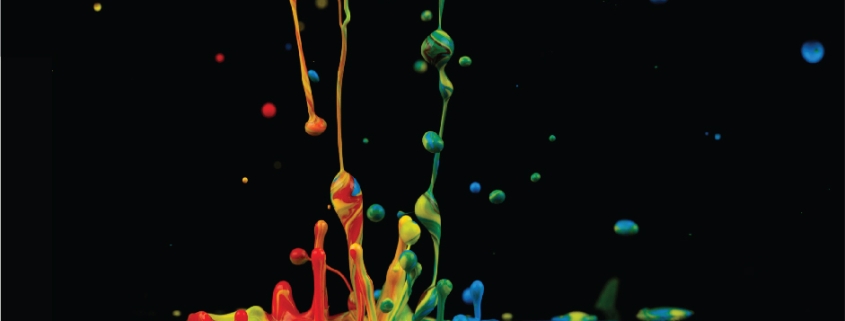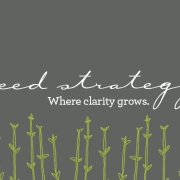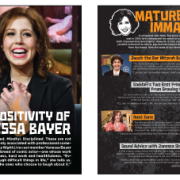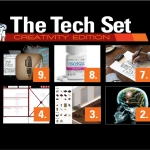Four Creativity Lessons You Learned Before Kindergarten
We were all born infinitely creative.
Don’t believe me? Sound like too broad a statement? Think back to that imaginary friend you played with for hours on end. Recall the secret missions you carried out in your backyard.
Consider the countless hours spent nose-deep in blank sheets of paper, crayons in hand, colorfully bringing to life whatever new-to-the-world character came to mind.
It’s true. We all had a life where no limits existed when it came to sheer and joyous creation.
So… what happened? Research suggests creativity typically peaks at age 5, and, for one reason or another (I’m looking at you, routine and social conformity), it wanes ever after.
But that’s not an absolute. It doesn’t have to be so. Scroll for four things you can do to reclaim your creative inheritance:
Gaze at the Stars, and Make Constellations The roots of creativity? Curiosity and connections. As children, curiosity came naturally. Part of the reason for this is that during our first decade or so on this planet, almost everything was new! That means nearly everything deserved further inspection and great wonder. A peek into the telescope. A short grasp. A little nudge. Hell, sometimes it required a brief lick. All in the spirit of satisfying our endless curiosity. And all of these new experiences begged to be endlessly interwoven, often resulting in wild (sometimes funny) connections. Creativity! But we all eventually become jaded. Sometime during adolescence, we fall prey to routine, and social conformity —”fitting in”— becomes our sole purpose. We figure out what we like, we see what feels good and we stick with it. Our brain, consciously or subconsciously, strives to create predictable patterns. And predictably, we stifle creativity. So, what can we do? Clues come from great innovators like Benjamin Franklin or Charles Darwin, who were not only tremendously curious, but who actively infused their ideas with their hobbies and outside observations, thus inciting unique and provocative connections. Metaphorically speaking, creativity can be attained by gazing at the things outside of us (stars) and making connections (constellations) between them. These outside celestial bodies can be your hobbies, passions, interests or friends. Try asking: How could I solve this problem if I came at it from a completely different perspective? What would it look like if I placed it in another environment? How would I solve this if I was someone else (say, Batman)? The initial exercise might feel absurd, but the more different the perspectives, the more unexpected the connections, and the more creative your solutions.
Snap Back Into It How often did you find yourself daydreaming as a child, looking aimlessly into the horizon while exploring entire worlds inside your head, shifting between possibilities at lightning speed? And, how often were you told to just stop? “Snap out of it!,” they’d say. Turns out, they were wrong. Research shows creativity often comes precisely from daydreaming and mind-wandering (“Eureka” shower moment, anyone?). Once you have defined the problem to solve, it just so happens that new thoughts and deep ideas come from still places. In academic creativity literature, it’s known as “incubation.” A few ways to incubate are to take a stroll, play a game, or meditate.
Get Your Hands Dirty As kids, we did nothing but create. Be it sand castles, crayon drawings or imaginary friends, the very act of constant creation was what made us creative. This is still true in our adulthood. The most creative artists are also the most prolific. Jerry Seinfeld’s method forced him to write a joke every day, and mark the calendar once he did. Then, there was but one commandment: “Don’t break the chain.” It requires non-judgmental ideation, being OK with “sub-par” creations. Ira Glass, the host of Pulitzer Prize-winning radio show This American Life, summarizes it like this: “The most important thing you can do [to be creative] is do a lot of work. Put yourself on a deadline so that every week you will finish one story. It is only by going through a volume of work that you will close that gap, and your work will be as good as your ambitions.” It’s a frustrating paradox. To get to the best, most creative answer, you must get your hands dirty, passing through all the wrong answers on a daily basis. So grab your box of crayons (or tool of choice) and just start making stuff.
Tell Stories Fantasies were fun when we were young, but things got really interesting if our friends joined the game and delved into our world. To get there, we often had to convince others to play the game we wanted to play. We had to simply and creatively convey how much fun it was going to be. It’s a truism that the best ideas sell themselves. This kind of persuasion is still required today. Once chosen and refined, creations must fight fiercely to stand out in an ever-growing idea marketplace. How? By simplifying an idea to a story. Tell a nugget-sized story that is linear and emotionally compelling. It’s harder than it sounds. Think about the memorability of the last presentation you sat through. The size 7 font. The death by bullet-point. It likely became apparent that making the simple more complex is easy. Making the complex simpler is hard. But making the complex simpler and better… that’s creativity. Having difficulty finding the story? Try setting artificial limits. What if you had to make your point in a haiku? What if you had three panels in a Sunday newspaper cartoon? Limit-setting forces us to think inside certain borders but outside of your usual parameters, often resulting in unconventional solutions. Dr. Seuss famously wrote “Green Eggs and Ham” after betting that he could produce a story using fewer than 50 words. Make the playful bet with yourself, tell a simple story, and you’ll get heads nodding.
Want to get your hands dirty? Seed Strategy offers “Back to the Treehouse”, a hands-on, multi-media seminar developed to help you reclaim your creative inheritance. For more information, contact us at hello@seedstrategy.com.Rolando Archila is VP of Innovation at Seed Strategy.
Connect with us! Follow Seed Strategy on our LinkedIn, Twitter, Facebook and Instagram









